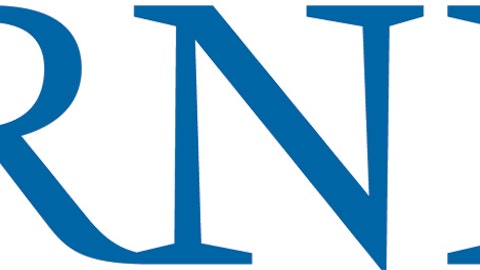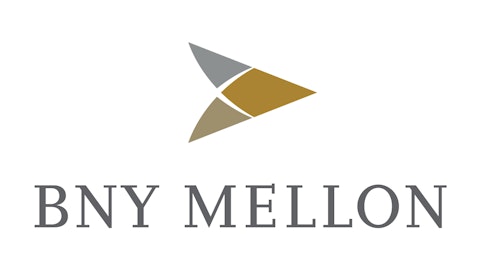We like to at least take a look at stocks which meet traditional value criteria, and Corning Incorporated (NYSE:GLW) qualifies with a trailing earnings multiple of only 11. At that price, the market is assuming very little if any growth- which, in theory, makes it easier for companies in that valuation range to beat expectations. When we look at Corning, however, we see that its margins plunged last year compared to 2011. While revenue growth was positive (and sales were up 14% in the fourth quarter versus a year earlier), earnings per share for the year came in at $1.15- down from $1.77 in the previous year, or a 35% decline.
The 10-K shows Corning Incorporated’s issues to be broad based. First of all, higher costs of goods sold caused gross profits to decline despite rising revenue. Second, expenses (including SGA and R&D) rose significantly, leading to a 22% drop in operating income (which comes before considering the effect of significantly lower equity in earnings from affiliated companies). We’d note that operating income had also declined in 2011 compared to 2010. The culprit is the Display Technologies segment, which provides materials for LCD displays. While responsible for less than half of total revenue, this business is by far the highest-margin of Corning’s businesses accounting for over 90% of net income in 2012. Bulls insist that growth in tablets, smartphones, and other devices will drive more demand for Corning’s products, but while this is a possibility we aren’t exactly encouraged by recent trends in the business which have unfolded even as those products have become quite popular.
We can see which hedge funds and other notable investors owned Corning Incorporated at the end of December by reviewing our database of 13F filings, which we use to develop investment strategies (we have found, for example, that the most popular small cap stocks among hedge funds outperform the S&P 500 by an average of 18 percentage points per year). The top holder of the stock out of the filers we track was Donald Yacktman’s Yacktman Asset Management, which owned almost 15 million shares (see Yacktman’s stock picks). Chilton Investment Company, managed by billionaire Richard Chilton, increased its stake in Corning by 4% to a total of just over 7 million shares (find Chilton’s favorite stocks).
The closest peer for Corning is Applied Materials, Inc. (NASDAQ:AMAT). That company has been struggling with profitability, and in its most recent quarter revenue and earnings numbers dived compared to the same period in the previous year. Wall Street analysts expect Applied Materials to recover, and so the forward P/E is 12, but even this represents a premium to Corning and so we don’t think that the peer is a good stock to buy.
What about other peers?
We can also compare Corning to other suppliers for tablet and smartphone companies, including Cirrus Logic, Inc. (NASDAQ:CRUS), Fusion-IO, Inc. (NYSE:FIO), and Qualcomm, Inc. (NASDAQ:QCOM). Fusion-io is another low-earnings company; while its revenue growth has been impressive recently, making it at least possible that net income will start to pick up, quite a bit of growth is already priced into the stock seeing as it trades at 53 times analyst consensus for 2014. At that price we would certainly wait for better results. Qualcomm, the largest of these companies by market capitalization at over $100 billion, has some characteristics of a “growth at a reasonable price” stock. Its trailing and forward P/Es are 17 and 13, respectively, and recent financial results have been quite good. While we would want to do more due diligence on the company it looks like a good prospect. That leaves Cirrus, whose valuation is quite low in terms of its trailing earnings and has been experiencing high growth recently as well. However, with 17% of the outstanding shares held short there is clearly a large bearish community and we would have to be careful when researching the company.
Still, Qualcomm and possibly Cirrus come out of our brief analysis as stocks which are at least worth a closer look. Corning’s multiples certainly look good, but with tablet and smartphone devices coming down in price we would generally expect supplier margins to face pressure as well and would certainly want to see the company can sustain its current levels of business- if not actually grow- before recommending it as a value stock.



